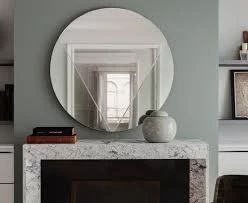

Understanding Float Glass Types A Comprehensive Guide
Float glass, a fundamental material in the world of architecture and design, is widely recognized for its clarity, smoothness, and versatility. It is produced through the float glass process, where molten glass is floated on molten tin, creating a smooth, flat surface. This process not only results in high optical quality but also allows for thicker glass sheets, making it an essential material for various applications. In this article, we will explore the different types of float glass, their characteristics, and some of their common uses.
1. Clear Float Glass
Clear float glass is the most common type available in the market. Characterized by its high transparency and excellent light transmission, clear float glass is used extensively in windows, mirrors, and glass doors. It typically has a greenish tint due to iron impurities present in the glass, which becomes pronounced in thicker sheets. However, advancements in manufacturing have led to the development of low-iron clear glass, which offers even higher clarity and is ideal for applications where aesthetic quality is paramount.
2. Low-Iron Float Glass
Low-iron float glass is known for its exceptional transparency and minimal green hue. This type of glass is produced by reducing the iron content during the manufacturing process, resulting in a product that allows for up to 90% light transmission. Low-iron glass is commonly used in high-end applications such as retail displays, aquariums, and lighthouses, where the visual quality is crucial. Its clarity also makes it a preferred choice for glass facades in modern architecture.
3. Tinted Float Glass
Tinted float glass is manufactured by adding metal oxides to the glass mixture during production. This type of glass comes in various colors, including bronze, gray, green, and blue, which can help reduce glare and control solar heat gain. Tinted float glass is often used in commercial buildings and residences for aesthetic purposes and energy efficiency. It enhances privacy while maintaining visibility and is particularly effective in areas with high sun exposure.

Reflective float glass features a metallic coating that enhances its reflective properties. This type of glass is designed to reduce solar heat gain and glare while providing privacy during the day. Reflective glass is commonly used in commercial buildings, particularly in office towers and skyscrapers, where it not only increases energy efficiency but also contributes to a striking modern aesthetic. Its reflective quality can create stunning visual effects in high-rise structures.
5. Laminated Float Glass
Laminated float glass consists of two or more layers of glass bonded together with an interlayer, typically made of polyvinyl butyral (PVB). This type of glass offers enhanced safety and security, as the interlayer holds the glass together in case of breakage, preventing shattering. Laminated float glass is often used in skylights, glass ceilings, and other architectural features where safety is a concern. It also provides effective sound insulation and UV protection.
6. Tempered Float Glass
Tempered glass is a type of float glass that has been heat-treated to increase its strength. This process involves heating the glass to a high temperature and then rapidly cooling it. Tempered float glass is five to six times stronger than regular glass and is less likely to break under stress. It is often used in external facades, shower doors, and glass railings. In the event of breakage, tempered glass shatters into small, safe pieces, reducing the risk of injury.
7. Insulating Float Glass
Insulating float glass is designed to improve thermal efficiency by incorporating multiple layers of glass separated by a spacer and filled with inert gas like argon or krypton. This type of glass helps reduce heat loss in buildings, making it ideal for energy-efficient construction. Insulating glass units (IGUs) are commonly used in residential and commercial applications.
Conclusion
Float glass types are diverse, catering to a wide range of practical and aesthetic needs in contemporary architecture and design. From clear and low-iron glass to tinted, reflective, laminated, tempered, and insulating options, each type offers unique benefits. Understanding these variations is essential for selecting the right glass for specific applications, ensuring that it meets both functional and aesthetic requirements. As technology continues to advance, the world of float glass will undoubtedly evolve, offering even more innovative solutions for the built environment.